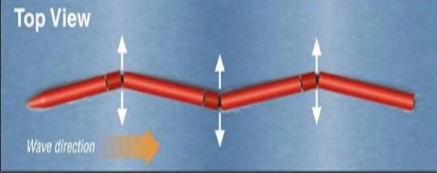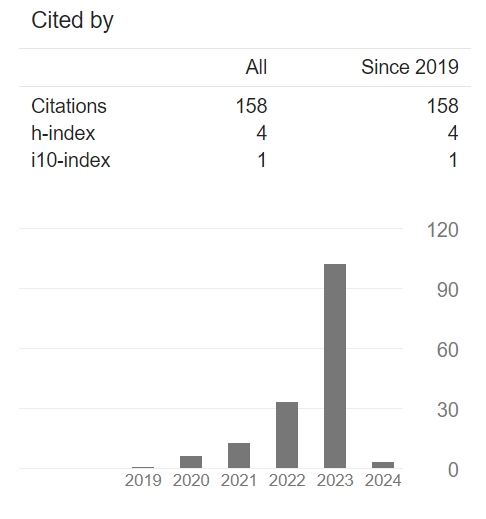CONCEPTUAL DESIGN OF A COMBINATION OF FLOATING BREAKWATER AND ATTENUATOR
DOI:
https://doi.org/10.62012/sensistek.v6i2.31715Keywords:
Kata Kunci : Floating Breakwater, Gelombang Laut, dan Teknologi AttenuatorsAbstract
Ocean waves are a more predictable resource with a higher energy density compared to the sun and wind. Wave energy is also a type of renewable energy and is the largest estimated form of global resource from Ocean Energy. One of the Renewable Energies is the reduction technique, which is a floating device that moves effectively following the direction of the waves. This technology will be combined with Floating Breakwater. Floating Breakwater is an advanced level of Breakwater that is built by floating or floating using mooring ropes or mooring as a barrier so that the building is not carried away by the current. With various similarities that exist in both of them are the same floating, so this Floating Breakwater can generate electrical energy using ocean wave energy, therefore this attenual Floating Breakwater is considered effective because on the other hand it can be a beach protection building by reducing wave energy and converting wave energy into electrical energy through generators that are at the bottom and bottom end of the mooring or mooring rope. With this type of technology, it will be easier to adjust to the characteristics of the sea that will be used.Downloads
References
ESDM. (2011). Pengembangan Energi Arus Laut. Diakses pada: 10 Desember 2021 dari: https://ebtke.esdm.go.id/post/2011/04/25/138/pengembangan.energi.arus.laut
Elizg. (2010) Energy and The Environment-A Coastal Perspective. Diakses pada 10 Desember 2021. Dari: https://coastalenergyandenvironment.web.unc.edu/ocean-energygeneratingtechnologies/waveenergy/thepelamis-wave-energy-converter/
B. Triadmodjo, Teknik Pantai. Yogyakarta: Beta Offset Yogyakarta, 1999
Drew, B., Plummer, A. R., & Sahinkaya, M. N. (2009). A review of wave energy converter technology.Larsen CM, Svein S, Jacob Q. Handbook on Design and Operation of Flexible Pipes; B1 Design Analysis. Norway: MARINTEK - NTNU - 4Subsea; 2014. p. 184-190.
DNV OS E304. Offshore Mooring Steel Wire Ropes. Norway: Det Norske Veritas; 2015. p. 26-27.
Sun JW, Wang SQ. Study on Motion Performance of Deepwater Spar Platform under Different Mooring Methods. China: Period of Ocean University of China; 2010. p. 135-137
Larsen K. Lecture Note: Mooring and Station Keeping of Floating Structures. Norway: NTNU; 2014. p. 10-13.
C. Paotonan, “Application of Composite Hanging Breakwater as a Pool Protector for Bantaeng Harbor”, zonalaut, pp. 318-327, Nov. 2023.
S. Rahman and T. Pairunan, “Wave Analysis Of Breakwater Building Structure In North Kalimantan”, Journal of Maritime Technology and Society, vol. 1, no. 1, pp. 26-32, Feb. 2022.












